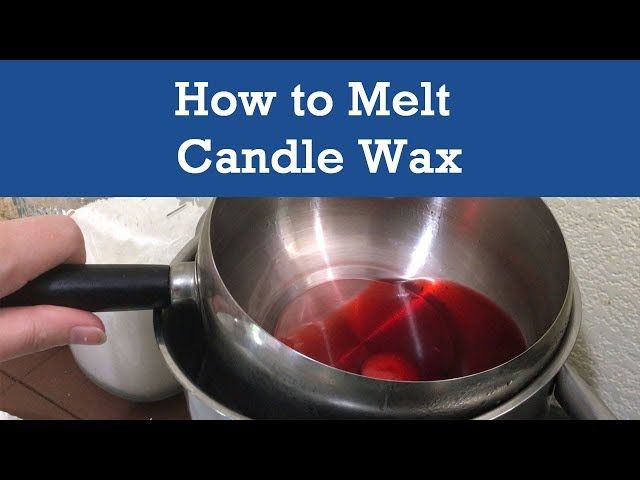Which Is Better For Candles Beeswax Or Soy?
Both beeswax and soy wax are commonly used in candle making. This article covers the key differences between the two waxes so readers can determine which is better for their candle making needs. The purpose is to provide an objective comparison of beeswax and soy wax candles, including factors such as cost, burn time, fragrance, environmental impact, aesthetics, and more. By the end, readers will have a good understanding of the pros and cons of each type of candle wax to inform their decision.
Beeswax Overview
Beeswax is a natural wax produced by honey bees. Worker bees secrete wax from eight wax-producing glands on the underside of their abdomen. The wax comes out as thin scales and is used by bees to build the honeycomb structure of their hive. The bees use the honeycomb to store honey and pollen.
To produce beeswax, worker bees consume honey. The honey is metabolized and wax is excreted through the wax glands as flakes or scales. These wax scales are chewed and molded by the bees into perfectly hexagonal-shaped honeycomb chambers. The honeycomb is used to store honey and house developing eggs and larvae.
When beekeepers harvest honey, they will often salvage the wax honeycombs as well. The wax is collected and melted down to obtain pure beeswax, which is then filtered and molded into blocks of reusable beeswax. Beeswax has a variety of applications, including candle making, cosmetics, artisan crafts, and food processing.
Overall, beeswax is a 100% natural product made by honey bees. It starts as wax secreted from specialized glands, and is used to build the comb that forms the foundation of the beehive. Beekeepers will then recycle the wax comb to obtain reusable beeswax for other purposes.
Source: https://www.saratogateaandhoney.com/blogs/honey-education/what-is-beeswax-and-how-is-it-made
Soy Wax Overview
Soy wax is a vegetable wax made from hydrogenated soybean oil. The process starts by extracting oil from soybeans. The raw soybean oil goes through hydrogenation, which hardens it into a wax-like consistency. Hydrogenation involves adding hydrogen atoms to the oil’s unsaturated fatty acids to make them saturated. This changes the chemical structure and turns the liquid oil into a solid wax. After hydrogenation, the soy wax can be further refined, mixed with additives, and processed into various product forms like flakes, beads or slabs. The final result is a creamy natural wax with a low melting point, suitable for candle making. Soy wax became popular in the 1990s as a sustainable alternative to paraffin wax. Many candle makers consider it eco-friendly because it comes from a renewable resource.
One source explains that soy wax is made by taking refined soy oil and fully saturating it to create a solid wax structure. The hydrogenation process allows the oil to harden into a wax at warm temperature ranges. (1) Another describes how pure hydrogenated soybean oil produces a 100% soy wax. Manufacturers can also blend soy wax with other waxes to create blends with modified properties. (2)
(1) https://simplenesscollection.com/en-us/blogs/news/how-is-soy-wax-made

(2) https://www.calyanwaxco.com/blogs/news/lets-talk-about-soy-wax
Cost Comparison
When it comes to pricing, soy wax is generally less expensive than beeswax. Soy wax ranges from $11.22/lb for a small quantity, to $3.69/lb for 10 lbs (source). Beeswax on the other hand, can cost $15-25/lb on average depending on the quality and quantity purchased. The main reason for the price difference is that soy wax is derived from soybeans which are abundant and easy to produce. Beeswax comes from honeycombs built by honeybees and requires more labor intensive harvesting and processing.
Soy wax also has cost advantages when it comes to candle making. It’s easier to work with and requires less additive oils to modify the wax properties. Beeswax is more brittle and often needs to be blended with other waxes or oils to make good candles. This adds more cost to the candle making process with beeswax.
In summary, soy wax provides significant cost savings over beeswax for both the raw material and the candle production process. Candle makers working on tight budgets often prefer soy wax for this reason alone.
Burn Time
When comparing burn time, beeswax candles tend to outperform soy wax candles. This is because beeswax has a higher melting point and density than soy wax, allowing beeswax candles to burn longer (1). Specifically, beeswax candles can burn for up to 8 hours per inch of candle width, while soy wax candles typically burn for about 1 hour per inch (2).
The higher melt point of beeswax also allows it to burn brighter than soy wax. Beeswax has a melt point between 144-147 degrees Fahrenheit, while soy wax melts between 115-125 degrees Fahrenheit. This gives beeswax candles a stronger, brighter flame compared to soy. However, the lower melting point of soy allows for a more even, consistent burn with less dripping.
While beeswax may burn longer per inch than soy, soy wax candles can often be created in larger diameters. So a large soy wax pillar candle may actually contain more wax and burn longer overall than a smaller beeswax pillar. But when comparing same-sized candles, beeswax clearly burns longer (3).
So in summary – beeswax burns longer and brighter per inch, but soy wax can allow for bigger candle sizes and an even burn. For maximum burn time in a candle, beeswax is generally the better choice.
Fragrance
When it comes to the ability to hold scent, beeswax has an advantage over soy wax. Beeswax’s honey-like aroma allows it to retain fragrance extremely well. The natural fragrance paired with added essential oils permeates beeswax candles, producing a stronger hot and cold scent throw than soy candles.
Soy wax, on the other hand, has little inherent fragrance of its own. While essential oils can be added to soy wax, the scent tends to fade more quickly compared to beeswax. Soy wax is also more prone to fragrance “burn off”, where the heat of the flame causes some of the scent to dissipate. This gives beeswax candles a more pronounced and lingering fragrance.
Environmental Factors
Beeswax candles are considered more sustainable and eco-friendly than soy. Beeswax comes directly from bees and requires minimal processing and refining to create candles. Beekeeping is also thought to be good for the environment as it provides pollination and helps biodiversity. However, there are some ethical concerns around beekeeping and overworking bees that should be considered 1.
Soy wax uses soybean crops which require significant water, pesticides, and land usage to grow at scale for commercial candle production. Processing soy wax also takes energy and resources. However, American grown soybeans are renewable and considered more ethical and eco-friendly than paraffin wax which is a petroleum product. Ultimately, beeswax candles are likely the more sustainable choice from an environmental perspective [2].
Health Factors
When it comes to health, there are benefits and risks to consider with both beeswax and soy wax candles.
Beeswax candles release negative ions when burned, which can help purify the surrounding air. Some studies have also found that beeswax candles emit lower amounts of potentially harmful volatile organic compounds (VOCs) compared to paraffin wax candles. However, beeswax still contains some VOCs, and the smoke may irritate those with allergies or asthma (Source).
Soy wax is often marketed as a cleaner burning and non-toxic alternative to paraffin wax. However, all candles produce some soot and VOCs when burned. There is limited research comparing soy wax specifically to other waxes in terms of emissions and health effects. Some individuals may still experience allergy or asthma symptoms from soy candles (Source).
In general, burning any candle indoors produces particles and gases that can aggravate respiratory conditions. Proper ventilation is recommended with both beeswax and soy candles. Those with sensitivities may want to avoid scented candles altogether and opt for unscented varieties of either wax.
Aesthetics
When it comes to aesthetics, beeswax and soy wax candles have some notable differences. Beeswax candles often have a richer, warmer golden or yellow hue compared to soy wax. The natural honeycomb structure also gives beeswax a distinctive visual texture. Soy wax is more neutral in color, ranging from off-white to light beige. It has a smoother, creamier appearance when in candle form.
The opacity of the waxes also differs. Beeswax allows some light to pass through, giving the candle a lovely glow. Soy wax is fully opaque, so the candle color is solid. Designs and motifs are more vivid on the surface of soy candles since the wax is less translucent.
Many consumers enjoy the natural, organic look of beeswax. Since soy wax is a vegetable-based wax, some prefer its clean, modern aesthetic. Ultimately, beeswax offers a more textured, classic style while soy wax provides a smooth, sleek, contemporary appearance.
Conclusion
Both beeswax and soy wax candles have their pros and cons. Beeswax candles burn longer, hold fragrance better, and have a natural honey aroma. However, they are more expensive and not vegan. Soy wax is affordable and vegan but doesn’t retain scents as well. It also burns faster than beeswax.
For most consumers, soy wax candles are the better option. They provide a clean, even burn at a lower price point. The wax is also renewable and environmentally friendly. While beeswax candles have a lovely natural scent, soy wax allows you to enjoy a wider variety of fragrances. Unless you require a long burn time or natural aroma, soy wax candles are typically preferable for their affordability and customizability.





